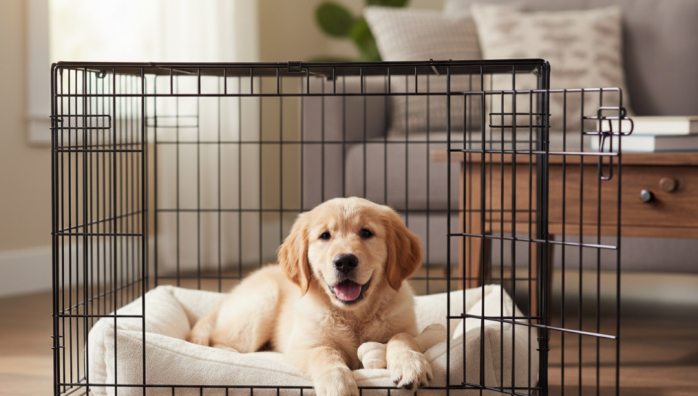Crate Training for Pet Alone Time
by admin in Pet Care Basics 18 - Last Update November 24, 2025

When I first started working from home, I thought it was the best thing that could have happened for my dog. We were together 24/7. But when the world opened up again and I needed to leave for a few hours, I noticed a change. The panting, the whining, the destructive chewing... it was classic separation anxiety. I felt a huge wave of guilt. My constant presence had accidentally created a problem, and I knew I had to find a gentle, effective solution. That\'s when I decided to revisit crate training, not as a cage, but as a safe space.
Why I changed my mind about crates
Honestly, I used to be against crates. They looked like cages, and the idea of \'locking up\' my dog felt wrong. But after doing some research and talking to a trainer I trust, my perspective shifted entirely. The goal isn\'t to confine them, but to provide a \'den\'—a private, secure spot that belongs only to them. For an animal with denning instincts, this can be incredibly calming. I realized my job was to make the crate the best place in the house, a sanctuary they would choose on their own.
Making the crate a happy place
This was the most crucial part of the process, and I took it very slowly. It\'s all about building positive associations. Here\'s exactly what I did:
- The five-star dining experience: I started feeding every single meal inside the crate. At first, I just put the bowl right inside the door, with the door wide open. Gradually, I moved it further back.
- High-value treats only: The really good stuff—like a frozen KONG toy stuffed with peanut butter or a special dental chew—only ever happened inside the crate. This made it a place of wonderful surprises.
- Comfort is key: I made the crate as comfortable as possible with a soft, washable bed and one of my old t-shirts that smelled like me.
- Never, ever force it: I never pushed, pulled, or forced my dog into the crate. I used a happy, encouraging tone and tossed treats inside, letting him go in and out at his own will. The door stayed open for weeks.
The gradual process for leaving
Once my dog was happily going into his crate to nap on his own, I started to work on closing the door. This part requires patience. I admit, I rushed it once and had to take two steps back. I started by closing the door for just a few seconds, giving a treat, and opening it again before he had any chance to get anxious. We slowly worked our way up from seconds to minutes.
My key steps for alone time practice
I learned to keep my arrivals and departures as low-key as possible. Making a big fuss only heightens the emotional stakes. When I was ready to leave for a real errand, I\'d give him his special crate-only KONG a few minutes before I walked out the door. He was so busy with his treat, he barely noticed me go. It was a game-changer for my peace of mind and his. Remember, if your pet is showing extreme signs of distress, it\'s always best to get guidance from a certified professional dog trainer or a veterinary behaviorist.














